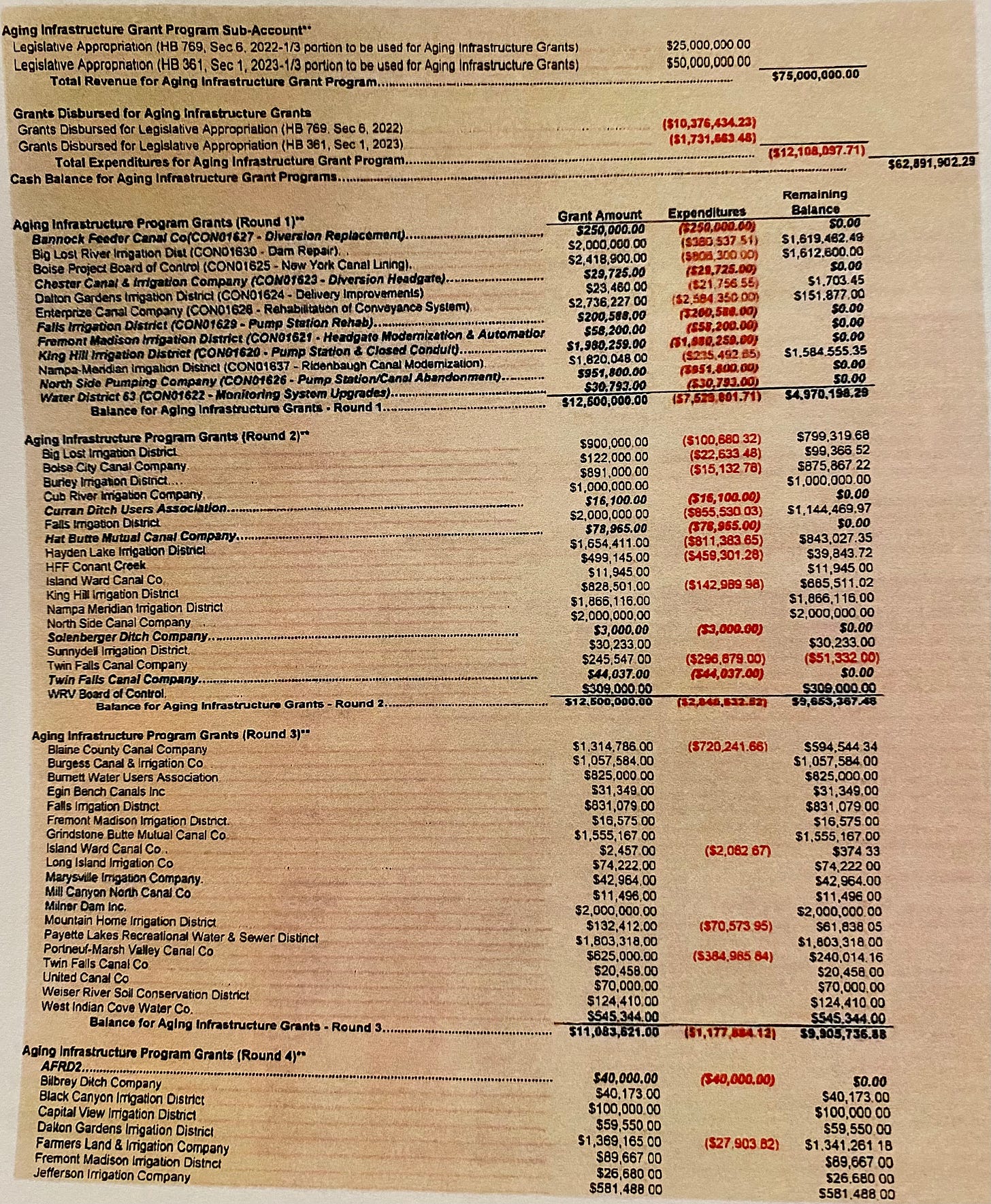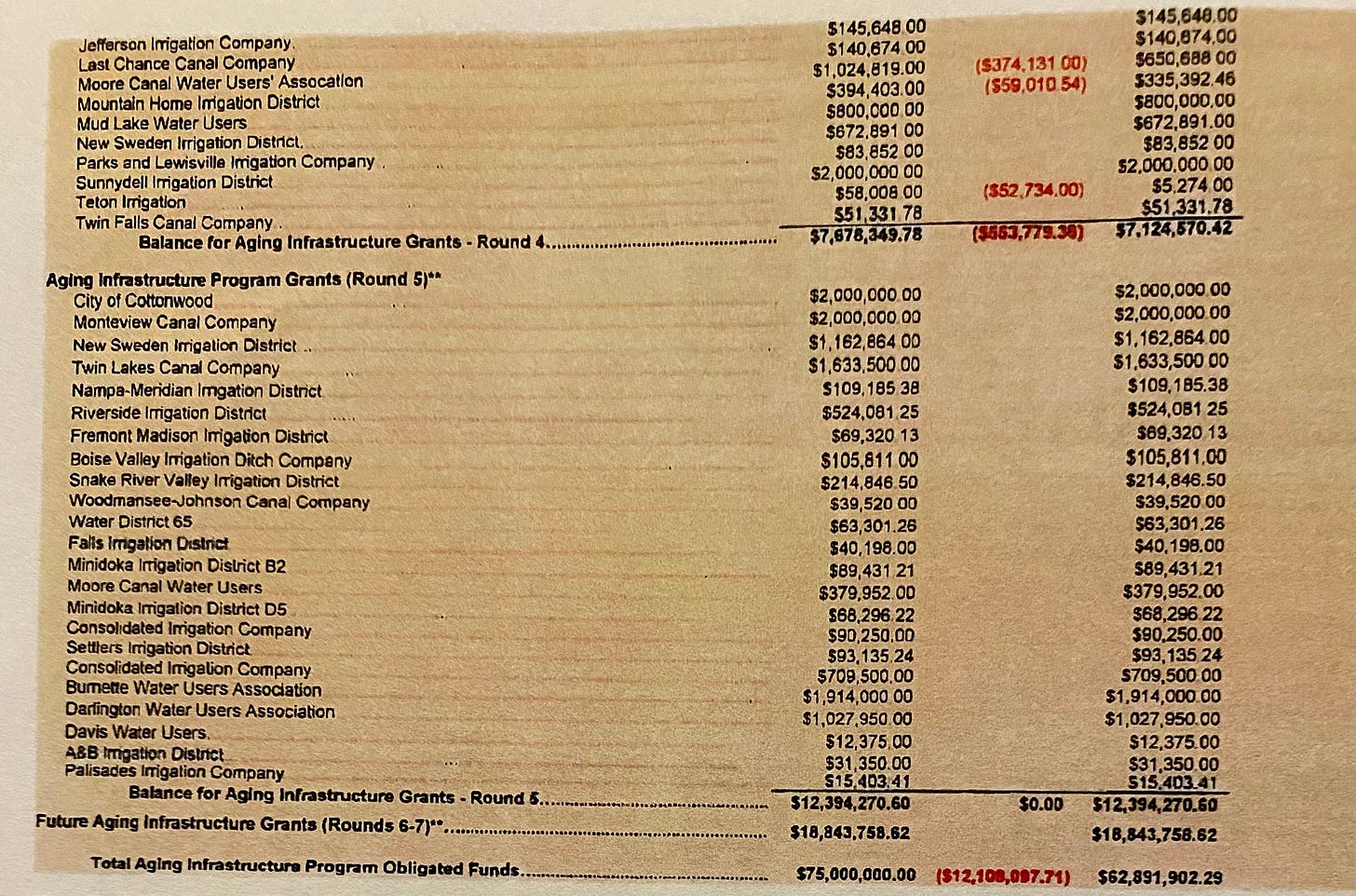Being on the Joint Finance and Appropriations Committee (JFAC) has been both a blessing and a curse. It requires a significant commitment, with daily meetings and additional workgroups.
The blessing? I'm learning a lot. The curse? I'm learning a lot.
There is an overwhelming amount of information to take in, understand, and absorb. With 20 members—10 from the Senate and 10 from the House—it is impossible to thoroughly examine every detail in just three months. While some members have served on the committee for years and have historical knowledge of the process, even they rely on Legislative Services Analysts to provide the information needed for us to make well-informed decisions on appropriations.
In the first month of the session, we voted on ten maintenance appropriation in committee and sent them to the House and Senate chambers for a full vote. So far, we’ve passed all but four bills:
Held In the House:
S1108 (Health and Human Services)
S1110 (General Government)
Held In the Senate:
H248 (Natural Resources)
H249 (Constitutional Officers)
Why are these being held up? I've been told they’re "go-home bills"—or, as I call them, hostage bills—used as leverage by leadership to get what they want before the session ends.
Ironically, we were told we couldn’t vote on enhancement bills until maintenance bills were passed. Yet here we are, passing all kinds of enhancements without setting our base budget.
Only in government can things be done backward—and they get away with it.
One enhancement I’d like to highlight in this Substack is the Department of Water Resources enhancement bill. The details of the motion are shown in the picture below.
The vote on the Department of Water Resources enhancement bill was 15 Ayes and 5 Nays—I was one of the Nays, and here’s why.
I fully support funding water projects because, according to the Idaho Constitution, we are obligated to do so:
Water Resource Agencies – Article XV, Section 7, mandates the establishment of agencies to regulate and control the use and distribution of water resources, emphasizing the importance of water management in Idaho.
However, in the workgroup I’m involved in, I proposed changing the $30 million ongoing allocation to a one-time allocation, with the intent to revisit it next year. Here’s why:
I learned that we are already appropriated $262 million of which we have only spent $19 million leaving us with a balance of $ $243 million waiting for shovel-ready sustainable and large-scale water projects. The issue isn’t a lack of funding—it’s a lack of shovel-ready projects. Some of these appropriations date back to 2019, and due to regulations, studies, and engineering hurdles, many projects are still not ready to break ground. See below pictures.
Yes, the unused funds accrue interest, but in this inflationary economy, it’s doubtful that interest will keep up with rising project costs. Until we find a way to actually start these projects, I couldn’t justify spending another $30 million in ongoing taxpayer dollars.
Additionally, I took an oath to limit the expansion of full-time government positions funded by taxpayer dollars. Idaho already has over 30,000 state employees, and I am committed to ensuring responsible spending before adding more.
I love our farmers, and I deeply value the importance of water. But when it comes to your tax dollars, my responsibility is to make difficult but responsible decisions—not to simply vote yes because the Governor is making promises.
It’s time for Idahoans to hear the whole truth—even if it’s hard to take in. Trust me, I know firsthand how difficult it can be to face reality.
I want to be clear: I am not against farmers. I fight for you every day. But it’s time you know the truth.
Bible Verse of Week: “When you pass through the waters, I will be with you; and when you pass through the rivers, they will not sweep over you. When you walk through the fire, you will not be burned; the flames will not set you ablaze.” Isaiah 43:2
Quote of the Week:
Song of the Week:











Don’t know how you do this work, Glenneda Z. You are one of very few voices speaking for the taxpayers and citizens of Idaho.
So sad that so many are serving themselves, the most powerful in the House and Senate, and their donors. Certainly they are not upholding their oath of office and they aren’t serving their voters.
A hard truth that farmers need to understand is the “fraud and deceit” (as one article explained) of cloud seeding. IDWR is attempting to grow the experimental cloud seeding program with little to no evidence it ever worked. The SNOWIE project leads reported that 3 out of about 24 clouds showed correlation of seeding and increased precipitation. Is this statistically significant? If so, wow! How did this lie of cloud seeding success perpetuate for this long? Introduce tax payer funding and liability releases and we see the fraud and deceit flourish in Idaho. Thankfully, the federal gov offers the GAO assessment on cloud seeding in December confirming what we already knew.
“when uncertainty was considered in estimates of cloud seeding effectiveness, the estimated effect was not distinguishable from zero with a high degree of statistical confidence” Pg 22
Let’s open the books and ask for more from IDWR. Why did they grow a multi million dollar program on hope that this will solve water management issues?